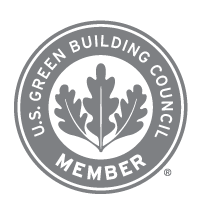Asphalt Surface Treatment Methods to Extend Pavement Life
Category: Blog Articles By: David Helm
If your community has spent a fortune over the years rehabilitating roads, you understand the work involved in creating and bringing road improvement projects to completion. Much of the heavy lifting is done in planning, from finding the funding to specifying a project’s parameters. Then, finally, the new ribbon of asphalt is installed and construction is completed! Our transportation system roadways are among the most valuable assets we manage, including asphalt surface treatment choices.
When construction ends destruction begins
New, smooth paving jobs begin to age the day they are laid. In fact, this deterioration begins even before the asphalt hits the road, due to the heat of manufacturing. Then, overtime, oxidation and moisture intrusion accelerate aging of the road resulting in raveling, surface roughness and pot holes.
What you can do about it
There are several affordable asphalt surface treatment techniques to preserve and extend the life of your capital improvement projects. When applied at the right time, you can maintain a high-quality standard and lower your life-cycle cost. A stitch in time saves nine.
This illustration shows common surface treatment types, costs and when to apply them:
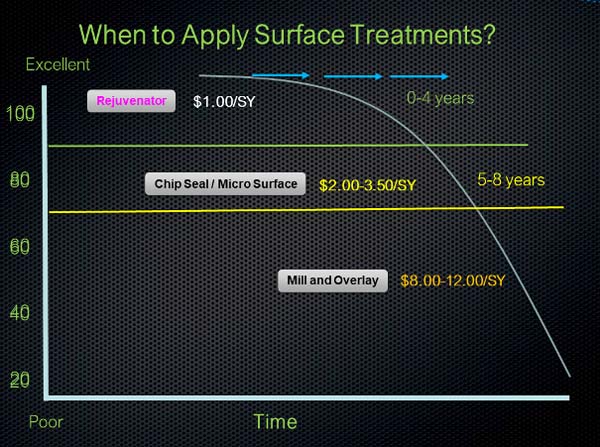
Surface Treatment Descriptions
Asphalt rejuvenator
A good first step in pavement preservation is asphalt rejuvenation. This treatment is applied at the top of the curve. It can be done as part of the new construction or soon after construction. The basic function of a rejuvenator is to preserve durability and seal the surface. It prolongs the time before more expensive processes are needed.
Asphalt rejuvenation replaces asphalt components known as petroleum maltenes. These are the constituents of the asphalt cement that are initially lost in the heat of manufacture, and then continue to dissipate due to weathering and oxidation over time.
Maltenes are the natural components of asphalt that create fluidity and cohesion. One could say maltenes are a bit like glue, giving asphalt its adhesion properties.
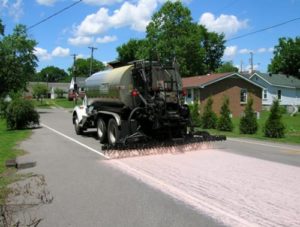
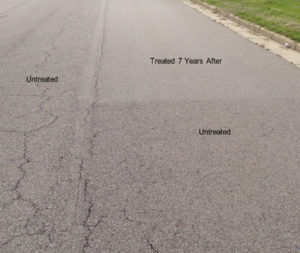
The Advantages of Asphalt Rejuvenation Treatment
- Seals the surface form moisture
- Extends the period during which critical asphalt hardening occurs
- Enables traffic to reopen in minutes
- Preserves existing striping
- Keeps roads smooth and in good condition longer
- Extends road life from four to five years
- Requires only a low-cost investment to implement
Chip Seal
Chip sealing is a spray-applied asphalt emulsion, followed by a surfacing of crushed aggregate. Historically, this method has more than a century of use. It can be customized to different road conditions and types of applications. For example, a single-seal coat or a double-seal coat is used for more deteriorated roads. A chip seal treatment can be used to waterproof a pavement just prior to an asphalt overlay. Another effective variation is cape sealing, which applies a chip seal prior to a micro-surface treatment.
The Advantages of Chip Sealing Treatments
- Require minimal corrective-maintenance investment
- Waterproof underlying pavement
- Seal cracks
- Create a new wearing surface
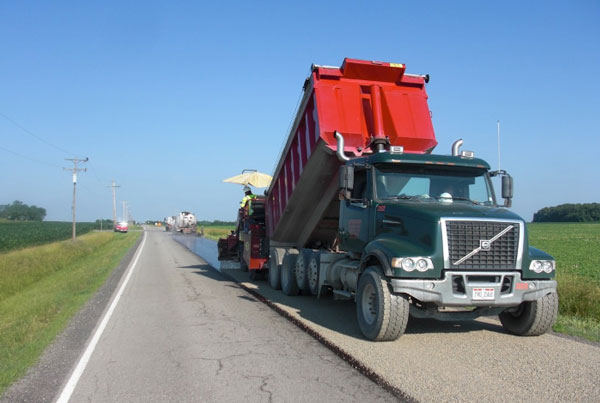
Micro Surfacing
Micro-surfacing treatments use a mixture of polymer-modified asphalt emulsion, 100 percent crushed aggregate, mineral filler, setting additives and water. They provide a new wearing surface to correct raveling and minor cracking and to improve skid resistance. A micro-surfacing seal deposits a uniform wearing surface proportional to surface demand. The application is usually calculated in lbs/square yard and is typically about 3/8-inch thick for a single course.
The Advantages of Micro-Surfacing Treatments
- Provide superior durability for extended service life
- Correct wheel rutting
- Correct moderate pavement bleeding or flushing
- Set and cure quickly, enabling a speedy resumption of traffic
- Minimize curb loss, with no
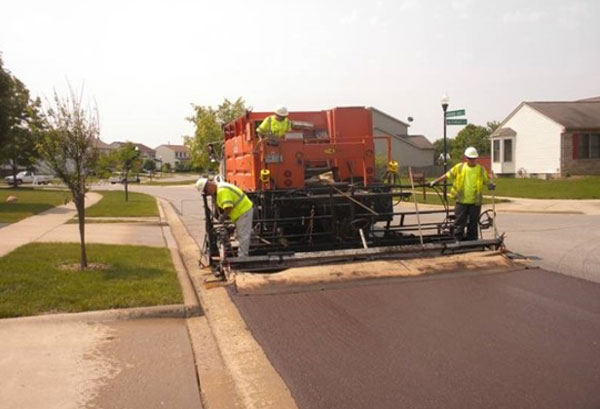
Conclusion
The three major categories of asphalt surface treatments are fast, effective and affordable. Each serves a specific purpose in the service life cycle of your asphalt roads. Planning preservation enhancements, and applying them during the early stages of pavement life, protects your road department’s investment in capital improvement projects.
Contact us today to discuss your specific needs or call 1-800-333-6309.
For more technical information about these treatment options, visit:


